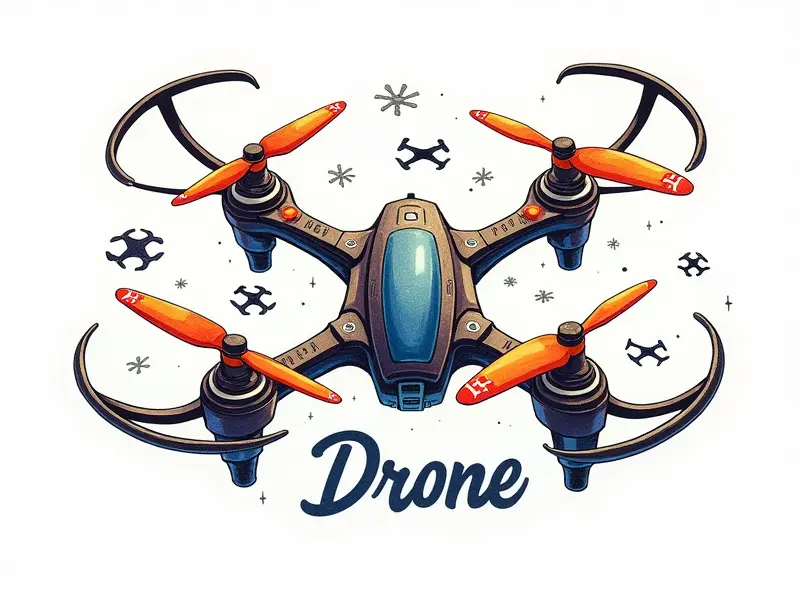Can drones land automatically?

Can Drones Land Without Human Input?
The rapid advancement in drone technology has led to the development of automatic landing features that can significantly enhance operational efficiency and safety. This article explores whether drones are capable of landing without human intervention, delving into the intricacies of automated drone landings.
Automatic Landing Features in Drones
Drones equipped with auto-landing capabilities use sophisticated sensors, GPS systems, and advanced algorithms to ensure smooth and safe landings. These features are particularly useful for drones operating under challenging conditions or those that require precise landing points.
Key Components of Auto-Landing Systems
- Sensors: Ultrasonic sensors, barometric pressure sensors, and infrared cameras help the drone detect its proximity to the ground and obstacles.
- GPS: Global Positioning System (GPS) ensures that the drone is accurately positioned for landing.
- Algorithms: Complex algorithms process sensor data and GPS information to guide the drone through a safe descent.
How Do Automated Drone Landings Work?
The process of an automated drone landing involves several steps, each critical for ensuring precision and safety. Here’s how it works:
- Data Collection: The drone gathers data from its sensors about altitude, speed, and environmental conditions.
- Navigational Planning: Using GPS coordinates and real-time sensor inputs, the system calculates an optimal landing path.
- Descent Initiation: Once the landing site is confirmed as safe, the drone initiates a controlled descent, adjusting its speed and orientation accordingly.
- Final Approach: As the drone approaches the ground, it slows down further to ensure gentle contact with the surface.
The Future of Drone Autonomy: Auto-Landing
The future of drones is increasingly leaning towards greater autonomy and automation. With advancements in AI and machine learning, auto-landing systems will become even more sophisticated and reliable:
- Improved Navigation Algorithms: Enhanced algorithms that can handle complex terrains and dynamic environments.
- Sensor Fusion: Integration of multiple sensor types to provide a comprehensive real-time environmental map.
- Machine Learning: Training systems with large datasets to improve decision-making capabilities during landings.
Benefits of Automated Drone Landings
The implementation of auto-landing features offers several advantages, including:
- Safety Enhancement: Reduces the risk of accidents due to human error or fatigue.
- Operational Efficiency: Allows for seamless transitions between flights without manual intervention.
- Cost Reduction: Minimizes wear and tear on drones, extending their operational lifespan.
Challenges in Developing Auto-Landing Tech
Despite the benefits, there are significant challenges in developing robust auto-landing technology:
- Environmental Variability: Drones must adapt to various weather conditions and terrain types.
- Data Processing Speed: Real-time processing of large volumes of sensor data is crucial for quick decision-making.
- Regulatory Compliance: Ensuring that auto-landing systems meet stringent aviation safety standards.
Top Drones with Auto-Landing Capabilities
A variety of drones are now available with advanced auto-landing features. Some popular models include:
- DJI Mavic Air 2: Known for its robust sensor suite and reliable GPS navigation.
- Hubble X10 Pro: Offers superior obstacle avoidance and precise landing accuracy.
- Ryze Tello: Ideal for beginners, with user-friendly auto-landing features.
Safety Aspects of Automatic Drone Landings
Ensuring the safety of automated drone landings is paramount. Key considerations include:
- Risk Assessment: Conduct thorough risk assessments to identify potential hazards and develop mitigation strategies.
- Maintenance Checks: Regularly inspect sensors, GPS modules, and other critical components for optimal performance.
- User Training: Provide comprehensive training on operating drones with auto-landing capabilities.
How to Enable Auto-Landing on Your Drone
To activate the auto-landing feature on your drone, follow these steps:
- Ensure that your drone is fully charged and has a stable GPS signal.
- Navigate to the settings menu in your drone’s app or control panel.
- Select the “Auto-Landing” option and configure any necessary parameters.
- Initiate takeoff, perform your mission, then activate auto-landing when ready.
Techniques for Smooth Drone Automatic Landings
To achieve smooth automatic landings:
- Select a Suitable Landing Site: Choose an open area free from obstacles and wind turbulence.
- Optimize Sensor Settings: Calibrate sensors to ensure accurate readings during descent.
- Monitor Environmental Conditions: Keep track of weather conditions that could affect landing accuracy.
Best Practices for Drone Automatic Landings
To maximize the effectiveness and safety of automated drone landings, adhere to these best practices:
- Prioritize Safety: Always prioritize safety over convenience or speed during landing operations.
- Keep Firmware Updated: Ensure your drone’s software is up-to-date with the latest bug fixes and improvements.
- Leverage Training Resources: Utilize available training materials to enhance your skills in operating auto-landing drones.
Conclusion
The ability of drones to land automatically represents a significant leap forward in unmanned aerial technology. By leveraging advanced sensors, GPS systems, and intelligent algorithms, these autonomous landings not only improve operational efficiency but also ensure enhanced safety standards. As the technology continues to evolve, we can expect even more sophisticated auto-landing features that will further revolutionize how drones are used across various industries.

